
Henry W. Petrie (March 4, 1857 - May 25, 1925) was an American composer and performer of popular music. Petrie was born in Bloomington, Illinois and died in Paw Paw, Michigan.

Henry W. Petrie (March 4, 1857 - May 25, 1925) was an American composer and performer of popular music. Petrie was born in Bloomington, Illinois and died in Paw Paw, Michigan.

David Thomas Jones was an English actor and singer. Best known as a member of the band the Monkees and a co-star of the TV series The Monkees (1966–1968), Jones was considered a teen idol.

The green flash and green ray are meteorological optical phenomena that sometimes occur transiently around the moment of sunset or sunrise. When the conditions are right, a distinct green spot is briefly visible above the Sun's upper limb; the green appearance usually lasts for no more than two seconds. Rarely, the green flash can resemble a green ray shooting up from the sunset or sunrise point.
Events in the year 1894 in music.
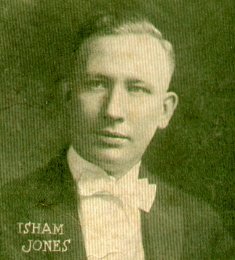
Isham Edgar Jones was an American bandleader, saxophonist, bassist and songwriter.
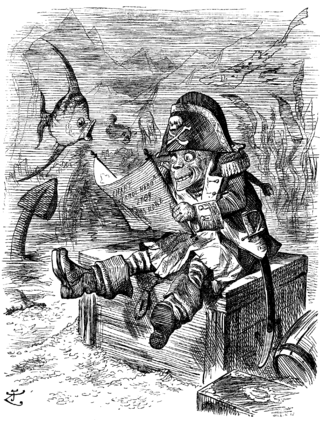
Davy Jones's locker is a metaphor for the oceanic abyss, the final resting place of drowned sailors and travellers. It is a euphemism for drowning or shipwrecks in which the sailors' and ships' remains are consigned to the depths of the ocean.

William Turner Jr. is a fictional character in the Pirates of the Caribbean films. He appears in The Curse of the Black Pearl (2003), Dead Man's Chest (2006), At World's End (2007), and Dead Men Tell No Tales (2017). He is portrayed by Orlando Bloom.
"On, Wisconsin!" is the fight song of the Wisconsin Badgers at the University of Wisconsin–Madison. A version with modified lyrics is the official state song of Wisconsin.

Pisces, Aquarius, Capricorn & Jones Ltd. is the fourth album by the Monkees. It was released on November 6, 1967, during a period when the band exerted more control over their music and performed many of the instruments themselves. However, although the group had complete artistic control over the procceedings, they invited more outside contributions than on their previous album, Headquarters, and used session musicians to complement their sound. The album also featured one of the first uses of the Moog synthesizer in popular music. Pisces, Aquarius, Capricorn & Jones Ltd. sold over three million copies. It was the band's fourth consecutive album to reach No. 1 on the U.S. Billboard 200.

"Columbia, the Gem of the Ocean" is an American patriotic song which was popular in the U.S. during the 19th and early 20th centuries. Composed c. 1843, it was long used as an unofficial national anthem of the United States, in competition with other songs. Under the title "Three Cheers for the Red, White, and Blue," the song is mentioned in Chapter IX of MacKinlay Kantor's Pulitzer Prize-winning novel Andersonville (1955). It was also featured in the 1957 musical The Music Man. In 1969, "Columbia, the Gem of the Ocean" was the music performed by a U.S. Navy Band embarked aboard USS Hornet as one of the ship's helicopters recovered the Apollo 11 astronauts from their capsule named Columbia after a splashdown in the Pacific Ocean.

Headquarters is the third album by the Monkees, released in May 1967 after the first season of their television series had concluded. It was the first album on which the group members made substantial songwriting and instrumental contributions, rather than relying on session musicians and professional songwriters. After a struggle for creative autonomy with their record label, the group had been allowed, to a degree, to record by themselves. Headquarters became the group's third consecutive No. 1 album on the Billboard 200 chart and was certified double platinum in the United States with sales of more than two million copies within the first two months of release. It also peaked at No. 2 on the UK charts. It is included in the 2006 book 1001 Albums You Must Hear Before You Die.

A lead sheet or fake sheet is a form of musical notation that specifies the essential elements of a popular song: the melody, lyrics and harmony. The melody is written in modern Western music notation, the lyric is written as text below the staff and the harmony is specified with chord symbols above the staff.
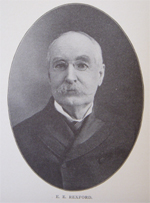
Eben Eugene Rexford was an American writer and poet, and author of lyrics to popular and gospel songs.

Sea Shells is an album by jazz singer Peggy Lee that was released in 1958.
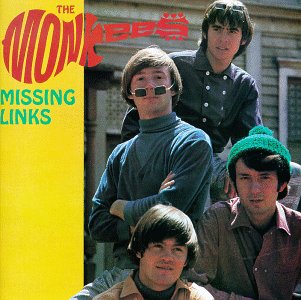
Missing Links is a compilation album of rare and previously unreleased songs by the Monkees, issued by Rhino Records in 1987. It is the first volume of a three-volume set, followed by Missing Links Volume Two in 1990 and Missing Links Volume Three in 1996.
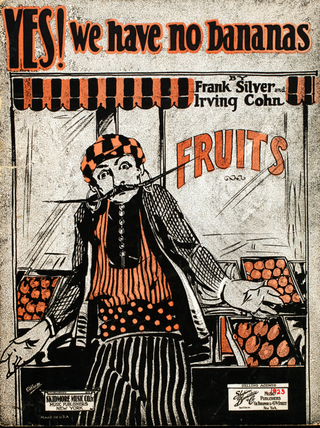
"Yes! We Have No Bananas" is an American novelty song by Frank Silver and Irving Cohn published March 23, 1923. It became a major hit in 1923 when it was recorded by Billy Jones, Billy Murray, Arthur Hall, Irving Kaufman, and others. It was recorded later by Benny Goodman and His Orchestra, Spike Jones & His City Slickers, Kidsongs, and many more.
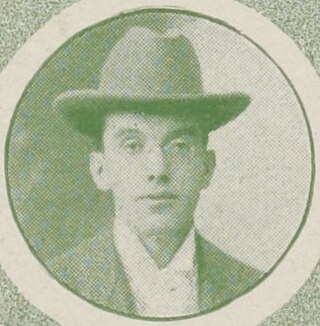
Arthur J. Lamb was a British lyricist best known for the 1897 song "Asleep in the Deep" and the 1900 song "A Bird in a Gilded Cage". He collaborated with many song-writers, including siblings Albert Von Tilzer and Harry Von Tilzer, Henry W. Petrie and Kerry Mills.
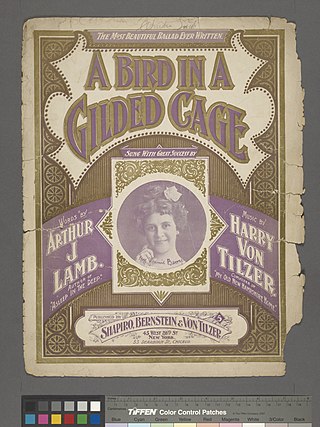
"A Bird in a Gilded Cage" is a song composed by Arthur J. Lamb and Harry Von Tilzer. It was a sentimental ballad that became one of the most popular songs of 1900, reportedly selling more than two million copies in sheet music. Jere Mahoney (Edison) and Steve Porter (Columbia) recorded two early popular versions of this song.

Alfred Solman was a prominent composer of popular songs in America in the first two decades of the twentieth century.
Edward Frederick Teschemacher, was a prolific writer of song lyrics. He was born at Highbury, Middlesex, England and he was educated at Giggleswick School, Settle, North Yorkshire.